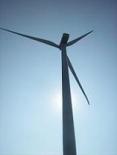Cell Phones, iPods and…Wind Turbines?
With the impressive surge in the production and consumption of hand-held technological devices in the last decade, we are vaguely familiar with the raw materials and rare metals used in manufacturing them. From iPods, to cell phones, to fluorescent light bulbs, rare metals are found in most of our technological devices.
Another product containing rare metals? Wind turbines.
Scott Malone wrote an article in Reuters on November 18, 2010 titled Analysis: Rare-earth surge is wake-up call for industrials where he cited a commercial wind turbine containing about a ton of rare earth.
Currently, China produces about 97% of the world supply of rare earth minerals, harnessing that title when low prices discouraged Western companies from developing mining projects on their own land. However, because of China’s increasing development, Chinese industries are beginning to manufacture more goods made from such elements rather than exporting the raw materials. Evidence for this can be found when Beijing slashed their rare earth exports by 40% this summer, citing China’s own economic development as first priority.
While the article did not mention the risk of reaching “peak metals” any time in the foreseeable future, losing a vendor of raw materials and gaining one of higher-valued manufactured products most certainly will raise the costs of production in all items, including wind turbines.
At a time where we have yet to set up a commonplace recycling system for rare-earth intense products such as cell phones, and iPods, we are only continuing to develop products more reliant on these natural minerals. In addition, those that have supplied the raw materials for past manufacturing, are moving on to manufacturing themselves. Although it is not often discussed, a serious potential hurdle for the development of wind energy as a dominant sector in our energy portfolio is evident when nearly 1 ton of rare-earth is required for turbine production.
On the bright side, General Electric Co. is working on a project partly funded by the DOE aimed at reducing the amount of rare earths in its electricity-generating wind turbines by up to 80%. In other words, saving 1,600 pounds of scarce metals from each turbine that can be used for other demanding technologies, while keeping costs at a more predictable estimate.
